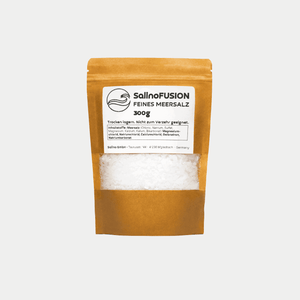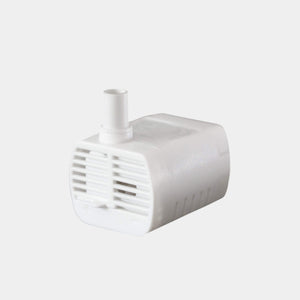The fascinating world of free diving
Imagine gliding silently through the clear blue ocean, with only a single breath in your lungs, surrounded by the fascinating underwater world. No loud bubbling of scuba gear, just the natural sounds of the sea and the soothing feeling of deep relaxation. Welcome to the world of free diving—a discipline that not only offers athletic challenges but can also have positive effects on our respiratory health and overall well-being.
Apnea diving, also known as freediving, is one of the oldest forms of diving. Long before scuba tanks existed, people explored the depths of the sea with nothing but their own lung capacity—whether to search for food, to recover treasure, or simply out of curiosity. Today, this traditional form of diving is experiencing a renaissance, not only as a competitive sport but also as a path to improved health and deeper body awareness.
In this article, we share with you seven science-backed techniques that can help you increase your lung capacity—whether for free diving or simply for a healthier respiratory system in everyday life.
The science behind breath holding
Before we dive into the practical techniques, it's worth taking a look at the physiology of breath-holding. What actually happens in our bodies when we hold our breath?
When we take a deep breath and then hold it, a fascinating interplay of various bodily processes begins. The oxygen level in our blood slowly decreases while the carbon dioxide level rises. It is primarily this increase in CO2 that makes us feel like we need to breathe again – not the lack of oxygen, as many might assume.
According to Dr. Erika Schagatay, professor of zoophysiology and leading researcher in the field of free diving, the human body has an innate diving reflex. "When the face comes into contact with cold water, our heart rate slows, and blood is diverted from the extremities to the vital organs," she explains in a study published in 2015. This mechanism, known as the "Mammalian Dive Response," allows us to stay underwater longer than we could on land.
With targeted training, we can learn to increase both our lung capacity and our tolerance to rising CO2 levels – two key factors for longer and more relaxed apnea diving.
Technique 1: Mastering Diaphragmatic Breathing

The foundation of any breathing training is correct breathing technique. Diaphragmatic breathing, also called abdominal breathing, is the most efficient way to fully fill and empty our lungs.
How it works:
- Lie on your back and place one hand on your stomach and the other on your chest.
- Breathe in slowly through your nose, allowing your belly to expand while your chest remains relatively still.
- Exhale through your slightly open mouth and feel your stomach drop.
- Repeat this exercise daily for 5-10 minutes.
A 2018 study in the Journal of Physical Therapy Science showed that regular abdominal breathing training can improve vital capacity (the maximum amount of air that can be inhaled and exhaled) by an average of 13%.
Dr. Christian Lorenzen of the German Research Center for Diving Medicine emphasizes: "Abdominal breathing utilizes the full potential of the diaphragm, our most important respiratory muscle. Many people use only a fraction of their lung capacity in everyday life because they breathe primarily with the upper chest area."
With regular practice, diaphragmatic breathing becomes second nature and forms the basis for all other breathing techniques.
Technique 2: Interval training for the lungs

Similar to interval training for the muscles, the lungs can also benefit from a structured alternation between exertion and recovery.
A proven protocol:
- Take a deep breath and hold it for as long as possible.
- Note the time.
- Breathe normally for twice as long as you were able to hold your breath.
- Repeat the cycle 8 times.
- Practice this workout 2-3 times a week.
A 2019 study of freedivers in the International Journal of Sports Physiology and Performance showed that those who completed 8 weeks of interval training increased their maximum apnea time by an average of 40%.
"Interval training places a controlled stress on the respiratory system," explains Dr. Guillaume Néry, former freediving world champion and sports physiologist. "The body responds by becoming more efficient—both in oxygen uptake and CO2 processing."
Important: This training should never be done alone in the water, but always in a safe environment, ideally under supervision.
Technique 3: CO2 tolerance training

One of the biggest challenges of free diving isn't the lack of oxygen, but rather dealing with rising CO2 levels in the blood. CO2 tolerance training helps raise the threshold at which your body signals the need to breathe.
Exercise to increase CO2 tolerance:
- Breathe normally for 2 minutes.
- Take a normal (not maximum) breath and hold it.
- When the urge to breathe becomes strong, breathe out and in immediately, then hold your breath again.
- Repeat step 3 a total of 8 times.
- Rest for 2 minutes and repeat the entire cycle 3 times.
According to a study in the European Journal of Applied Physiology, this training can significantly increase carbon dioxide tolerance and thus lead to longer diving times.
"The art of freediving is not about ignoring the urge to breathe, but about learning to deal with it," says Natalia Molchanova, multiple freediving world record holder. "With regular training, what initially seems uncomfortable becomes a familiar sensation that you learn to accept."
Technique 4: Learn the art of relaxation

Relaxation is an often underestimated factor in free diving. A relaxed body consumes less oxygen and can hold its breath longer.
Relaxation techniques for apnea divers:
- Progressive muscle relaxation: Tense and relax different muscle groups one after the other.
- Visualization exercises: Imagine yourself gliding calmly and relaxed through clear water.
- Breathing meditation: Focus on your breathing without controlling it.
- Yoga practice: Poses that promote rib cage flexibility are particularly helpful.
A study in the Journal of Human Sport and Exercise found that freedivers who regularly practiced relaxation techniques were able to reduce their oxygen consumption underwater by up to 20%.
"In my career as a freediver, I've learned that mental relaxation is just as important as physical fitness," reports Herbert Nitsch, who holds the world record for "No Limits" freediving at 214 meters. "The more relaxed I am, the longer and deeper I can dive."
Technique 5: Regular endurance exercises

Aerobic fitness and lung capacity go hand in hand. Regular endurance training not only increases your heart's efficiency but also improves your lungs' ability to absorb and utilize oxygen.
Recommended endurance activities:
- Swimming (ideally with a snorkel or breathing over longer distances)
- Running or jogging (especially mountain running challenges the lungs)
- Cycling (preferably on hilly terrain)
- Rowing (uses many muscle groups and challenges the respiratory system)
Researchers at the University of California have shown that regular endurance training can increase maximum oxygen uptake (VO2max) by up to 25%, which directly correlates with improved diving performance.
Dr. Lindholm of the Karolinska Institute recommends: "For freedivers, three to four endurance sessions per week are ideal. Training should last approximately 30-60 minutes at moderate to high intensity to achieve optimal adaptations of the cardiorespiratory system."
Technique 6: Targeted strengthening of respiratory muscles

The respiratory muscles, consisting of the diaphragm and the intercostal muscles, can be specifically trained like any other muscle group.
Effective exercises for stronger breathing muscles:
- Respiratory resistance training : Special devices provide resistance during inhalation or exhalation, thus strengthening the respiratory muscles. Studies show that this type of training can increase inspiratory muscle strength by up to 30%.
- Over-expansion of the lungs : After taking a deep breath, take in more air in small sips to improve the elasticity of the lung tissue.
- Empty lung stretch : After exhaling completely, expel more air to train the exhalation muscles.
A study in the Respiratory Physiology & Neurobiology Journal showed that specific respiratory muscle training can increase respiratory endurance by up to 50% – a crucial factor for longer dives.
"Training your respiratory muscles is comparable to training for a marathon," explains Dr. Miro Ljubkovic, a physiologist and diving medicine expert. "It requires consistency and time, but the results are impressive and can make the difference between an average and an exceptional freediver."
Technique 7: Optimal nutrition for lung health

What we eat affects every organ in our body – including our lungs. A targeted diet can improve lung health and thus diving performance.
Foods that promote lung health:
- Antioxidant-rich foods : Berries, dark chocolate, and green leafy vegetables combat oxidative stress in the lungs.
- Omega-3 fatty acids : Oily fish, walnuts, and flaxseed have anti-inflammatory properties that can protect the respiratory system.
- Magnesium-rich foods : Whole grain products, nuts and legumes help relax the respiratory muscles.
- Vitamin D : Important for the immune function of the lungs – either through sunlight or through dietary supplements in consultation with a doctor.
A study in the European Respiratory Journal showed that a Mediterranean diet high in antioxidants can improve lung function and reduce inflammation in the airways.
"Diet plays an underestimated role in lung health," emphasizes Dr. Emma Morano, sports medicine physician and freediver nutritionist. "A balanced, nutrient-rich diet not only supports post-workout recovery but can also directly influence lung capacity and efficiency."
The health benefits of apnea training
Apart from improving diving performance, apnea training offers numerous health benefits that can also be of interest to non-divers:
- Improved lung function : Regular breathing exercises can increase lung capacity by 10-15% and improve overall breathing efficiency.
- Reduced stress : The relaxation techniques associated with apnea training can reduce stress and anxiety and promote overall mental health.
- Better sleep : Some studies suggest that breathing exercises can improve sleep quality, especially in people with mild sleep apnea symptoms.
- Increased ability to concentrate : Consciously focusing on the breath trains attention and can improve cognitive functions.
- Stronger immune system : The immune system can be strengthened through improved oxygen supply and activation of the parasympathetic nervous system.
Dr. James Nestor, author of the bestselling book "Breath: The New Science of a Lost Art," sums it up this way: "When we learn to breathe better, every system in our body benefits. The techniques used by freedivers can be useful to all of us—whether we go underwater or not."
Safety instructions: What you should definitely pay attention to

Before we conclude, it is important to emphasize some basic safety tips:
- Never dive alone : Apnea diving should always be done with a qualified buddy who can supervise you.
- No hyperventilation : Excessive hyperventilation before diving can be dangerous and lead to a blackout.
- Medical evaluation : Consult a doctor before starting intensive apnea training, especially if you have pre-existing medical conditions.
- Gradual Progression : Increase your dive times and depths slowly and methodically.
- Professional instruction : For advanced training, you should seek out a certified apnea instructor.
Conclusion: The long breath for success
Improving lung capacity for free diving isn't an overnight feat, but a process that requires patience, consistency, and the right approach. The seven techniques presented here—from mastering diaphragmatic breathing to optimal nutrition—combine to form a holistic approach that can not only improve your diving performance but also promote your overall health.
The beauty of breathwork is that it can be practiced anywhere, anytime. You don't have to live by the ocean or have access to a pool to benefit from these techniques. Many of the exercises can be performed comfortably at home and integrated into your daily routine.
Remember: every breath counts. And with every conscious breath, you move closer to your goal of greater lung capacity and a deeper understanding of your body.
A natural ally for your respiratory system
Speaking of respiratory health—did you know that indoor air quality can have a significant impact on your breathing performance? It's especially important to provide your respiratory system with optimal conditions during your training break.
In this context, a mini saline bath can be a valuable addition. By enriching the room air with salt particles, it can help moisten the respiratory tract and clear mucus – similar to a day at the seaside. The SalinoVatis mini saline bath was specially developed to create a high salt content in the air, thus supporting the natural cleansing mechanisms of the respiratory tract.
After intensive training sessions or simply as a supportive measure in everyday life, this compact device can help keep your respiratory system in top shape - ready for the next dive or simply for healthier breathing in everyday life.
Sources and further reading:
· Schagatay, E. (2015). "Human diving response and its clinical implications." Acta Physiologica, 215(3), 111-121.
· Journal of Physical Therapy Science (2018). "Effect of diaphragmatic breathing exercises on pulmonary function."
· International Journal of Sports Physiology and Performance (2019). "Interval breath-hold training improves maximum apnea time in elite freedivers."
· European Journal of Applied Physiology (2017). "CO2 sensitivity training enhances breath-hold duration in elite divers."
· Journal of Human Sport and Exercise (2016). "Relaxation techniques reduce oxygen consumption during apnea."
· Respiratory Physiology & Neurobiology Journal (2020). "Specific respiratory muscle training improves breath-hold endurance."
· European Respiratory Journal (2018). "Mediterranean diet and lung function."
· Nestor, J. (2020). "Breath: The New Science of a Lost Art." Riverhead Books.
Disclaimer: This article is for informational purposes only and does not replace professional medical advice. Always consult a physician before beginning apnea training, especially if you have any pre-existing medical conditions.



